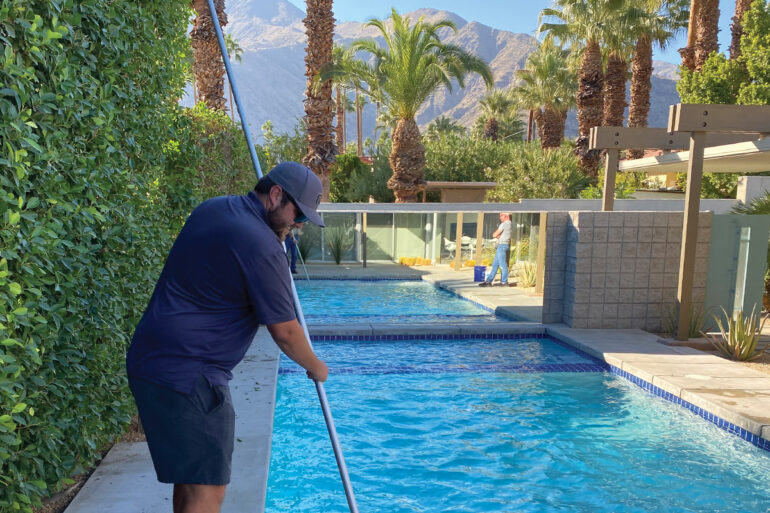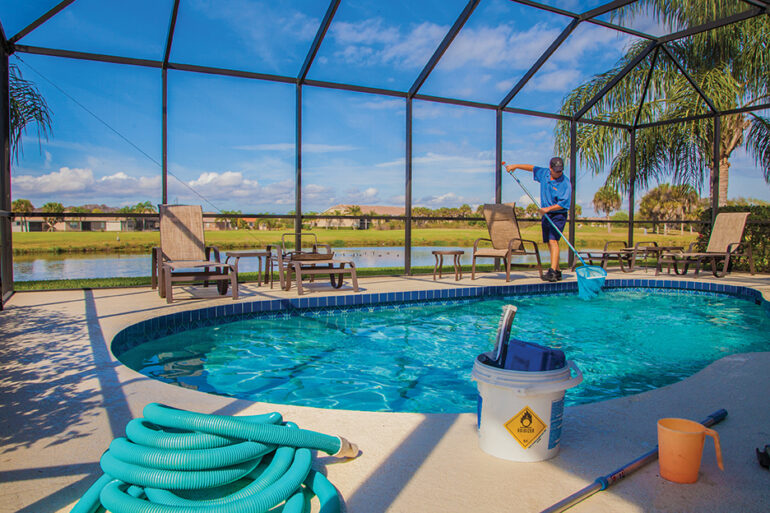Understanding OSHA’s New Silica Requirement

Inhalation of respirable crystalline silica is dangerous and could even be life threatening. It is estimated that approximately 2.3 million U.S. workers are exposed to respirable silica dust at work each year.
The Occupational Safety and Health Administration has released regulations — designed to better protect workers from respiratory illness — for a new standard of lowering crystalline silica levels. Pool companies have taken this regulation seriously and are working to ensure compliance in the year ahead.
Carvin DiGiovanni, vice president of technical and standards at the Association of Pool & Spa Professionals, says while companies working on pools and spas were not the main reason OSHA updated the regulations — it was targeting the mainstream construction industry — the pool industry got caught in the overlap and must comply.
“Any time there is a pool being constructed and you are using a saw to cut the concrete, you’re creating dust and you have to wear the necessary OSHA-prescribed equipment to protect the workers,” he says. “Our industry studied it, and we are going to comply with all the silica requirements of the law.”
The rules state that anyone working on a construction project of any type must wear the necessary personal protection equipment.
Jennifer Hatfield, APSP’s director of government affairs, notes OSHA’s regulations are designed to reduce the permissible exposure limit for respirable crystalline silica to 50 micrograms per cubic meter of air, averaged over an eight-hour shift.
Therefore, all companies who have employees working on pool projects must utilize engineering controls (such as water or ventilation) to limit worker exposure to the PEL as well as provide respirators when engineering controls cannot adequately limit exposure.
Those affected include all construction work, except where employee exposure will remain below 25 micrograms per cubic meter of air as an eight-hour, time-weighted average under all foreseeable conditions.
DiGiovanni says the rules also require companies to limit worker access to high exposure areas, develop a written exposure control plan, offer medical exams to monitor highly exposed workers and train workers on silica risks and how to limit exposures.
“Don’t shortcut safety by not applying the right equipment,” DiGiovanni says. “The rules were put in place because of the potential for respiratory problems.”
Some pool construction and remodeling companies believe it will affect them, but because most of their work is done outside, the regulations are less severe. For example, the OSHA rules say that if a worker is performing a silica-generating task outdoors for four hours or less — such as cutting concrete using a handheld power saw with an integrated water delivery system — and the tool is maintained and used in accordance with the manufacturer’s specifications, the worker would not be required to wear a respirator, and the contractor would be in compliance with the PEL.
There are 18 recommended product solutions and controls OSHA has provided in its guidelines. Pool-construction companies should become familiar with the common silica-generating construction tasks and corresponding control methods that have been documented to be effective.
Among the tools listed are walk-behind saws, drivable saws, rig-mounted saws or drills, stand-mounted drills and vehicle-mounted drilling rigs for rock and concrete.
Based on APSP’s assessment, DiGiovanni says it’s only if this task was done indoors that he or she would need to wear the required respiratory protection, though no air sampling would be required for either scenario.
Furthermore, the rules apply just to those participating in the task. OSHA’s rules are clear that any other workers who are in the vicinity of a silica-generating task are not considered “engaged” in the task and therefore, are not subjected to the same guidelines.
Still, OSHA recommends that if a worker is performing a silica-generating task that requires a respirator, it’s best not to ignore other workers nearby when silica dust is being generated.
“These regulations provide flexibility to help employers — especially small businesses — protect workers from silica exposure,” DiGiovanni says.
Definitions from OSHA
- Crystalline silica is a basic component of soil, sand, granite and many other minerals. Quartz is the most common form of crystalline silica. Cristobalite and tridymite are two other forms of crystalline silica.
- All three forms may become respirable size particles when workers chip, cut, drill or grind objects that contain crystalline silica.






